E China’s Hangzhou revives historical and cultural heritage of centuries-old Grand Canal
Taking a “water bus” at the Wulinmen Wharf in Hangzhou, east China’s Zhejiang province, and traveling north for about 30 minutes along the Grand Canal, a vast waterway connecting Beijing and Hangzhou, one can arrive at the Gongchen Bridge, a stone arch bridge over the canal.
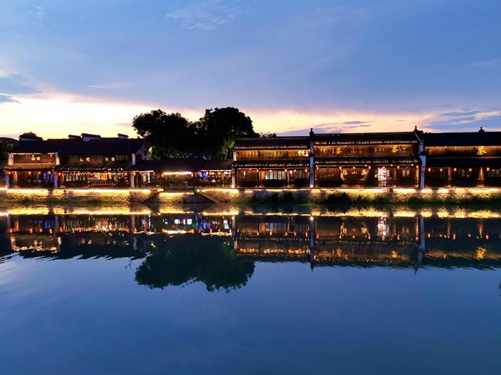
Photo taken on June 15, 2021, shows magnificent scenery of Tangqi township, Hangzhou, east China’s Zhejiang province, at night. (People’s Daily Online/Xu Genzhu)
To the east of the bridge stand lofty modern buildings, and historical and cultural blocks are situated on the other side. Standing on the bridge spanning the Grand Canal, visitors can feel both the hustle and bustle of modern life and charm of the historical heritage of Hangzhou.
The Grand Canal, which stretches nearly 3,200 kilometers, is made up of the Beijing-Hangzhou Canal, the Grand Canal built during the Sui Dynasty (581-618) and Tang Dynasty (618-907), and the Eastern Zhejiang Canal, which is an extension to the Beijing-Hangzhou Canal.
With a history of more than 2,500 years, the Grand Canal is hailed as a grand project created by ancient Chinese people. The “golden waterway”, known as a crucial path for the transportation of goods in ancient China, is injecting new vitality into the city.
After putting into operation “water buses” along arteries of the canal, Hangzhou has launched four characteristic routes for sightseeing, not only allowing visitors to tour around the city by traveling along the river, but benefiting commuters in the city.
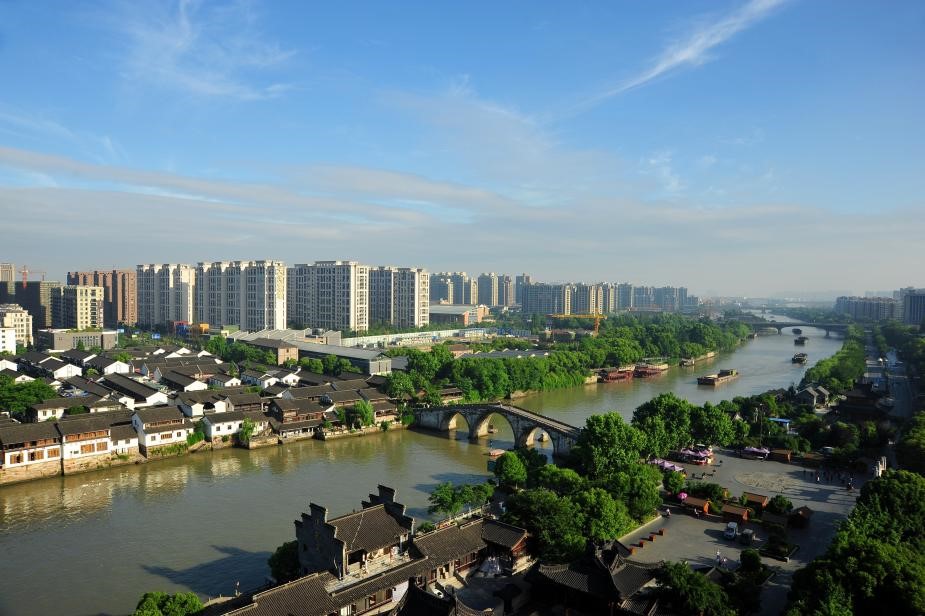
Photo shows a section of the Grand Canal in Hangzhou, east China’s Zhejiang province. (People’s Daily Online/Xu Hui)
The Hangzhou section of the Grand Canal is surrounded by rich historical and cultural remains.
In 2014, the Grand Canal was incorporated into the World Heritage List of the United Nations Educational, Scientific and Cultural Organization, including six heritage sites and five riverways of the Hangzhou section, which runs for about 110 kilometers, making Hangzhou one of the cities with the most heritage sites among all cities along the canal.
While vigorously promoting the comprehensive conservation of the Grand Canal, Hangzhou has improved road networks, enriched scenic spots, beautified the surroundings of the waterway, set up a museum for the canal and created a public space for leisure activities near the canal, fully showing culture along the waterway and making the “calling card” of the city more shining.
The protection of the Grand Canal has been based on the city’s development and integrated into the renovation projects of the city.
Under the principle of “renovating ancient buildings while preserving their original features and ensuring minimal intervention”, Hangzhou has improved the three historical blocks along the canal to protect and inherit its cultural heritage while actively boosted the development of cultural tourism in recent years.
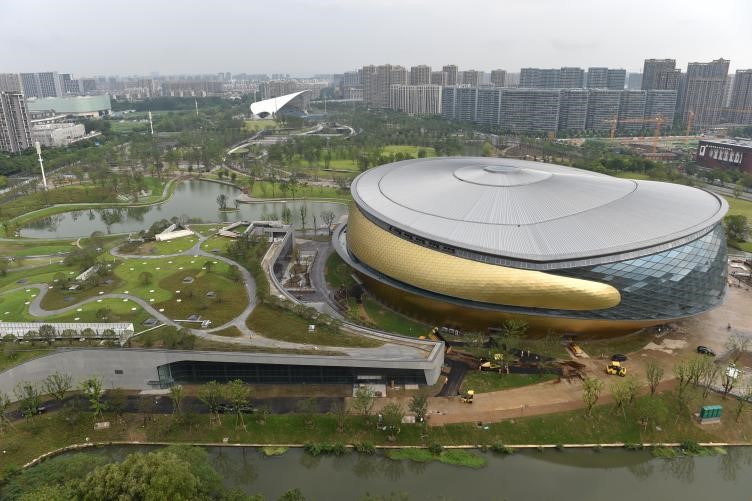
Photo taken on August 10, 2021, shows the construction site of the Grand Canal Asian Games Park, which will soon be completed, in Hangzhou, east China’s Zhejiang province. (People’s Daily Online/Pan Haisong)
Gongshu district of Hangzhou, together with the Grand Canal Group, has been renovated while keeping the traditional features of ancient buildings in historical blocks near the canal. At the same time, it has improved the infrastructure for residents and allowed over two million residents to live comfortably and pleasantly on the banks, reshaping a characteristic urban waterfront landscape.
The three historical blocks along the canal in Hangzhou have different development orientations. Based on their geographical positions, they are designed as a miniature typical water town in south China, a block featuring relaxed pace of life, and a scenic area of intangible cultural heritage, respectively.
The closely related three blocks, while forming along the canal an area that enables the public to enjoy culture and entertainment activities, help spread excellent traditional Chinese culture among more people.
The ever-flowing canal represents numerous development opportunities. As long as cities along the canal earnestly fulfill their responsibility to protect and make use of the waterway while inheriting its historical and cultural heritage, ensure accurate positioning and introduce innovative ideas and methods to the development of their sections of the canal, and integrate and optimize resources, they will certainly revive the canal and give it a new charm.
Photos
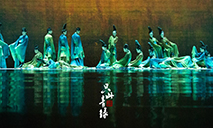 Dance show saluting traditional culture of the Song Dynasty makes its debut
Dance show saluting traditional culture of the Song Dynasty makes its debut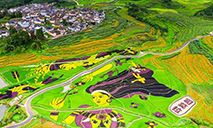 Village in SW China’s Yunnan embraces prosperity through agricultural tourism
Village in SW China’s Yunnan embraces prosperity through agricultural tourism Eighth birthday for pair of giant pandas celebrated in Haikou, Hainan province
Eighth birthday for pair of giant pandas celebrated in Haikou, Hainan province Olympic gold medalists portrayed in Shanxi artist’s polymer clay sculptures
Olympic gold medalists portrayed in Shanxi artist’s polymer clay sculptures
Related Stories
Copyright © 2021 People's Daily Online. All Rights Reserved.






